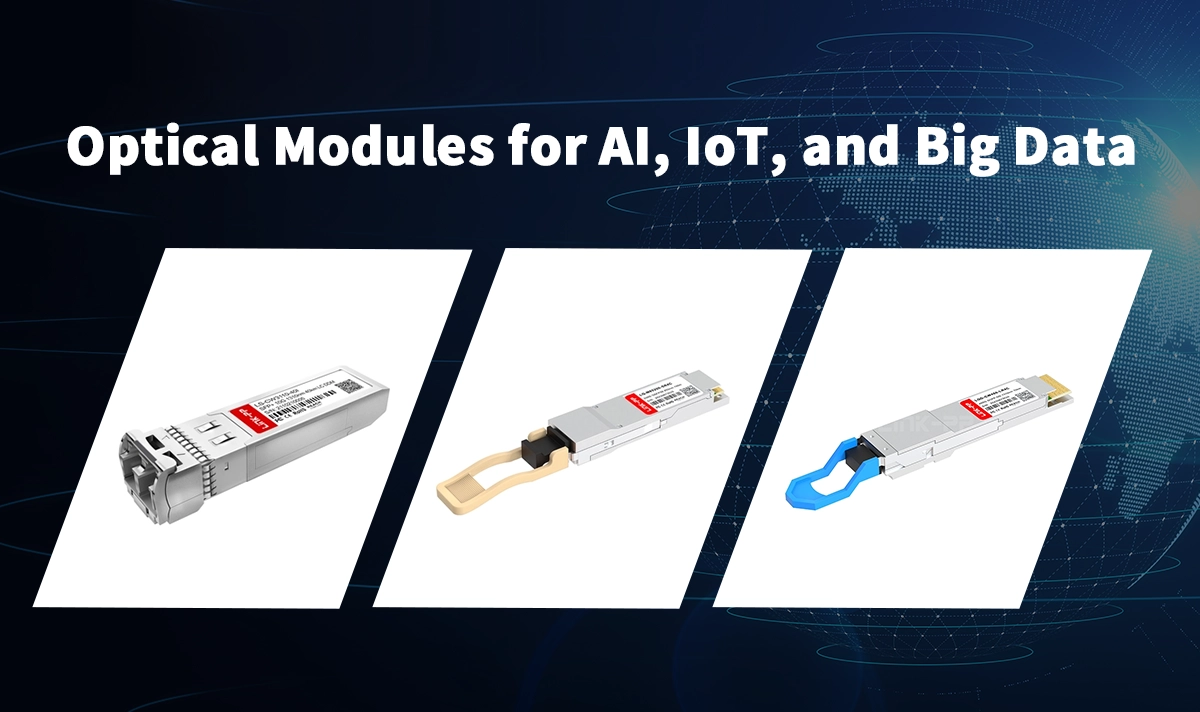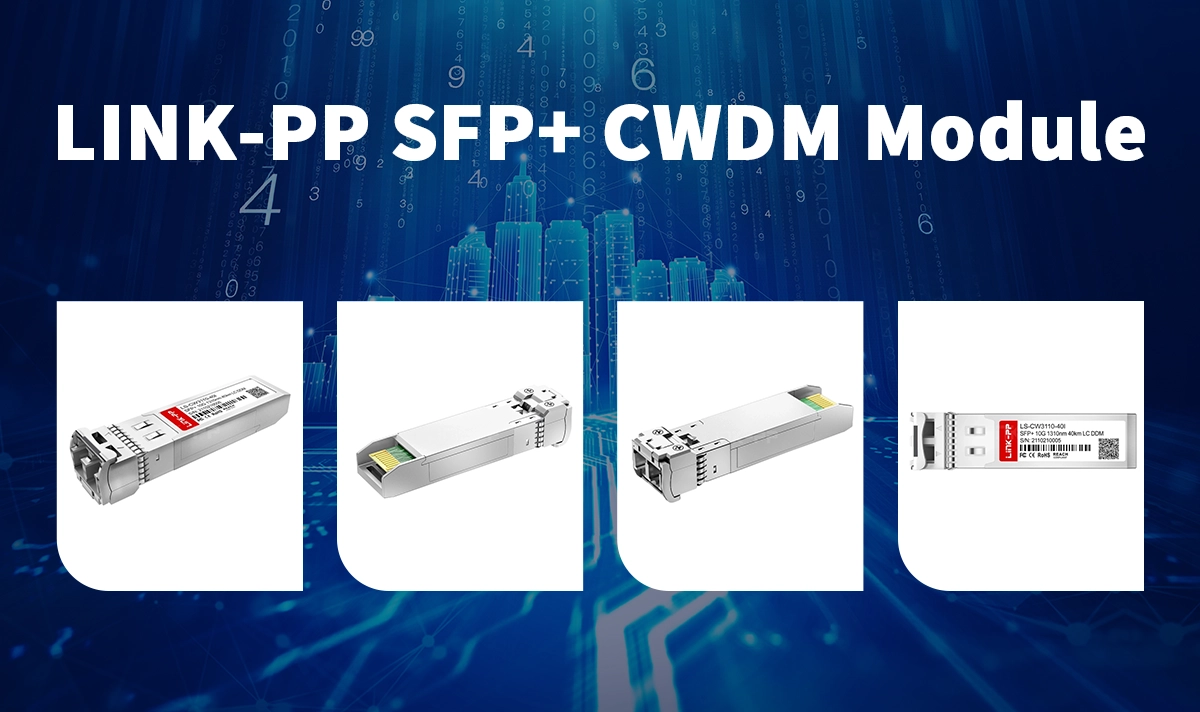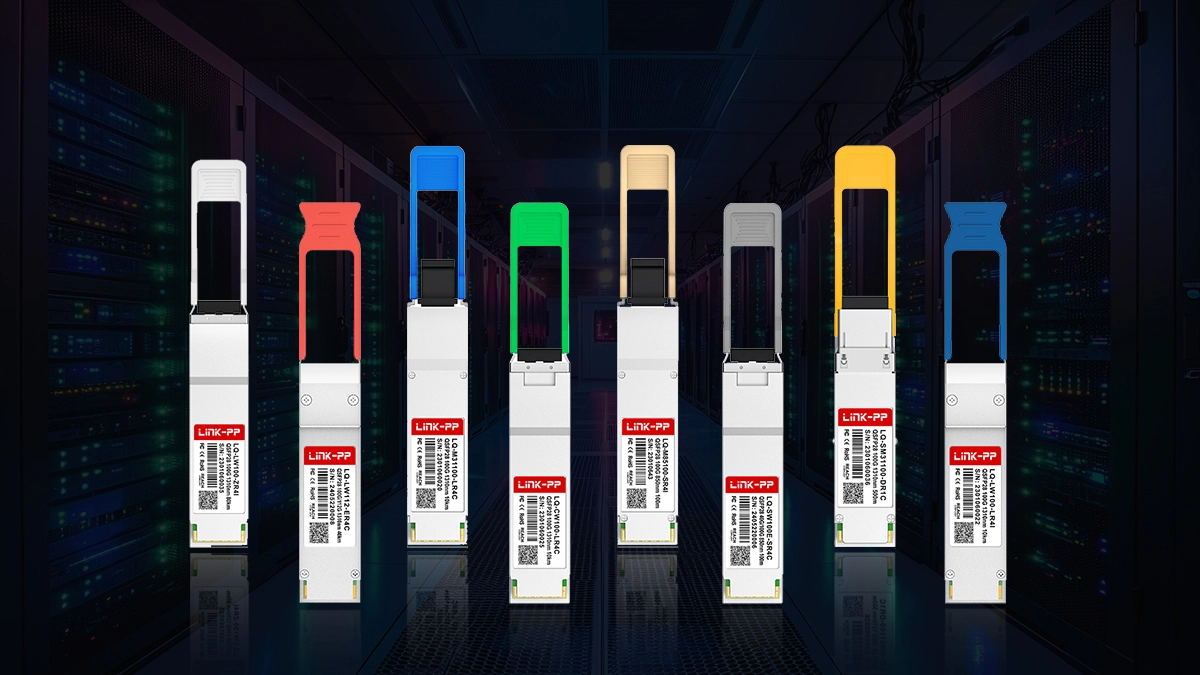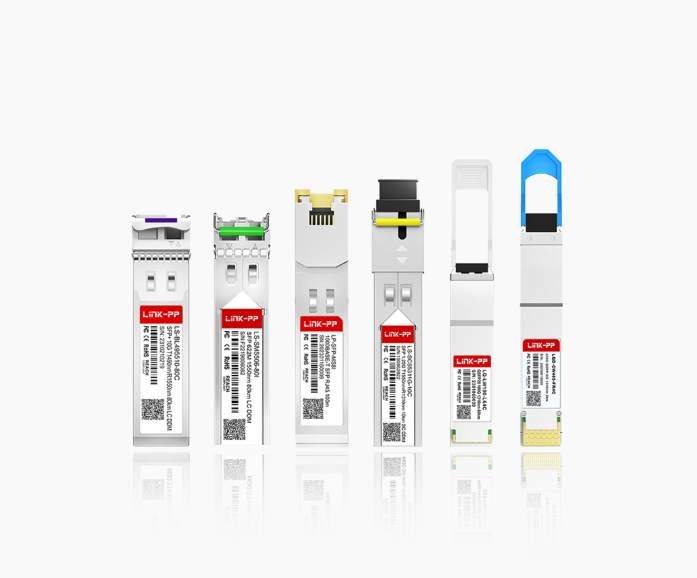
✅ Empowering Intelligent Connectivity
Artificial Intelligence (AI), the Internet of Things (IoT), and Big Data analytics have redefined how industries process and exchange information. These applications demand robust, high-speed optical connectivity between servers, storage, and network switches. LINK-PP optical modules are designed to meet these challenges—offering scalable bandwidth, low latency, and consistent performance across complex digital ecosystems.
✅ Key Takeaways
LINK-PP Optical Modules offer low latency and high bandwidth, which are essential for efficient AI model training and real-time data processing.
These modules support scalable connectivity for IoT networks, allowing you to connect billions of devices without compromising performance.
LINK-PP's advanced optical technologies reduce power consumption and operational costs, making your data center more energy-efficient.
With high reliability and low maintenance needs, LINK-PP transceivers ensure your network runs smoothly, minimizing downtime.
The flexibility of LINK-PP modules allows for easy upgrades and hot-swapping, helping you adapt your infrastructure to future demands.
✅ Why Optical Modules Are Essential for Modern Data Infrastructure

Modern AI and IoT systems rely on fast, reliable data transmission to ensure real-time processing and decision-making. Optical transceivers convert electrical signals into optical ones, enabling high-speed data transfer across long distances with minimal signal degradation.
LINK-PP’s optical module portfolio, including SFP, SFP+, SFP28, and QSFP series, provides flexible solutions for data centers, edge computing nodes, and industrial IoT gateways.
Key advantages of LINK-PP optical modules:
High throughput and scalability — Supports 1G to 100G speeds for flexible network architecture.
Low power consumption and low latency — Ideal for GPU clusters and AI workloads requiring high efficiency.
Industrial-grade reliability — Extended temperature support ensures stability in edge and outdoor environments.
MSA compliance and DDM support — Ensures full interoperability and real-time performance monitoring.
You save on maintenance costs and reduce downtime with LINK-PP optical transceivers. Forward error correction (FEC) ensures accurate data transmission, which lowers costs from data loss. A strong optical signal-to-noise ratio (OSNR) keeps communication seamless and reduces operational expenses. The distance-capacity ratio measures efficiency over long distances, helping you minimize maintenance.
Metric | Impact on Performance | Impact on Costs |
|---|---|---|
Ensures accurate data transmission | Reduces costs from data loss | |
Maintains seamless communication | Lowers operational costs | |
Distance-Capacity Ratio | Measures efficiency over long distances | Minimizes maintenance expenses |
✅ Product Spotlight: LS-CW3110-40I 10G SFP+ CWDM Optical Module
One of LINK-PP’s flagship products, the LS-CW3110-40I, exemplifies performance and versatility in AI and IoT network environments.
Key Specifications:
Data rate: 10 Gbps
Transmission distance: 40 km over single-mode fiber
Wavelength: CWDM
Interface: SFP+ hot-pluggable
Digital Diagnostics: DDM (SFF-8472 compliant)
Operating temperature: -40°C to +85°C (industrial grade)
Applications:
AI computing nodes and GPU interconnects
IoT gateway uplinks to edge data centers
Cloud data transport and distributed storage synchronization
The LS-CW3110-40I ensures stable, high-bandwidth optical communication for applications that cannot tolerate downtime or data loss.

✅ Supporting AI Workloads with Scalable Optics
AI data centers process massive datasets in real time, demanding deterministic latency and high throughput between servers. LINK-PP’s high-speed SFP28 and QSFP28 optical modules deliver 25G to 100G connectivity, supporting distributed computing architectures such as GPU clusters and high-performance storage fabrics.
By maintaining precise optical signal integrity and advanced temperature compensation, LINK-PP modules minimize network jitter—improving AI model training speed and inference reliability.
✅ Connecting IoT and Edge Infrastructure
IoT systems generate continuous streams of sensor data that must be aggregated and analyzed. LINK-PP’s industrial-grade optical transceivers support long-distance communication between edge gateways and core data centers, even in harsh environments.
Modules like LS-CW3110-40I provide 40km reach, enabling IoT operators to extend network coverage without deploying additional repeaters—saving both power and infrastructure cost.
✅ Optimizing Big Data Transmission
Big Data workloads rely on parallel data transfers between distributed storage clusters. Optical modules with Digital Diagnostics Monitoring (DDM) help network operators track link performance in real time—ensuring predictable throughput and avoiding unplanned downtime.
LINK-PP optics are compatible with leading OEM switches and NICs, providing seamless integration into existing data center infrastructures.
✅ Why LINK-PP Optical Modules Stand Out

LINK-PP has over two decades of experience delivering reliable optical communication components trusted by global OEMs.
Key differentiators include:
Broad compatibility with leading switch and transceiver vendors
Comprehensive testing and certification for IEEE and MSA standards
Custom solutions for specific wavelength, distance, or temperature requirements
Proven performance across AI, 5G, IoT, and data center applications
✅ Conclusion
As AI, IoT, and Big Data applications evolve, the need for fast, reliable, and scalable optical connectivity will only grow. LINK-PP’s advanced optical module portfolio—featuring products such as LS-CW3110-40I—enables organizations to build data networks that deliver superior performance and long-term reliability.
Whether you are upgrading data center interconnects or deploying industrial IoT systems, LINK-PP provides optical solutions engineered to support the next generation of intelligent workloads.
Learn more: Explore LINK-PP Optical Modules →
✅ FAQ
1. What makes LINK-PP optical modules suitable for AI workloads?
You get low latency and high bandwidth with LINK-PP modules. These features help you train and run AI models faster. The modules support real-time data transfer between GPU clusters.
2. How do LINK-PP optical transceivers improve IoT network reliability?
You benefit from high MTBF ratings and automatic power control. These features keep your IoT network stable. You experience fewer interruptions and less maintenance.
3. Can I upgrade my data center easily with LINK-PP modules?
Yes! You can hot-swap LINK-PP modules. You add or replace modules without shutting down your network. This flexibility helps you scale your infrastructure quickly.
4. Are LINK-PP modules energy efficient?
You save energy with LINK-PP modules. They use less power by removing DSP chips. Lower power use means less heat and lower cooling costs.
5. What certifications do LINK-PP optical modules meet?
LINK-PP modules meet strict standards like IEEE 802.3 and UL. You can trust their quality and safety in your network.
✅ See Also
Exploring Optical Modules' Role in Advancing AI Technology
Reasons to Opt for LINK-PP Fiber Optical Transceivers
Overview of LINK-PP LS-DW2810-40I 10G DWDM Transceiver




